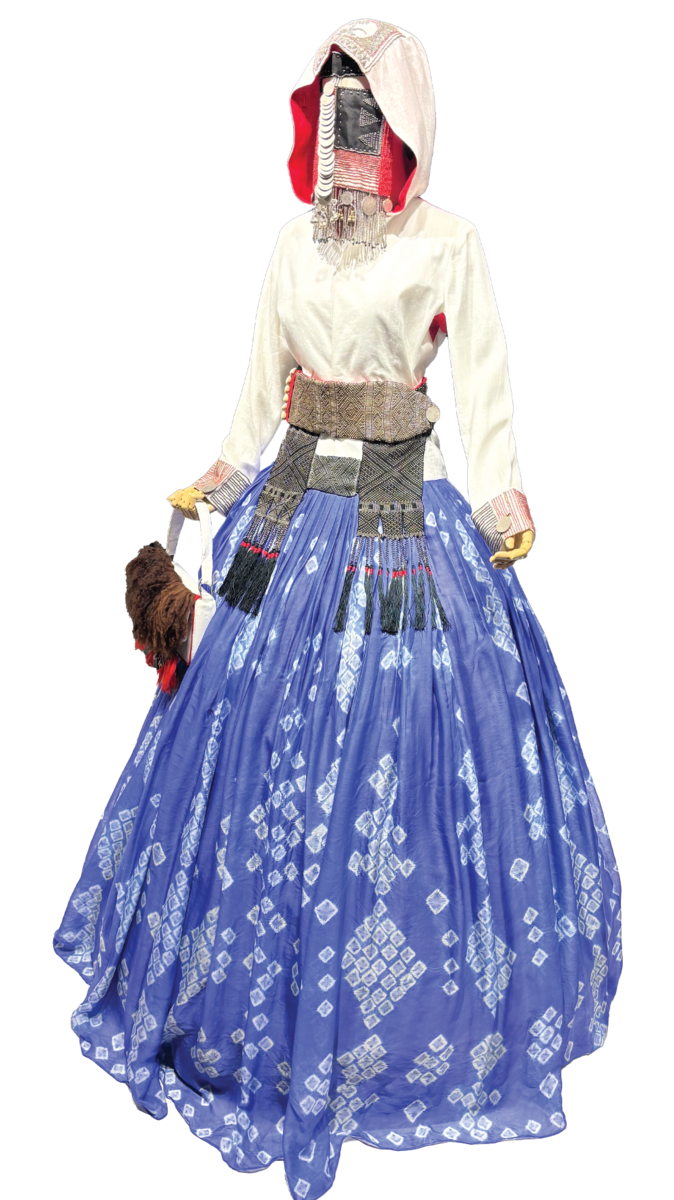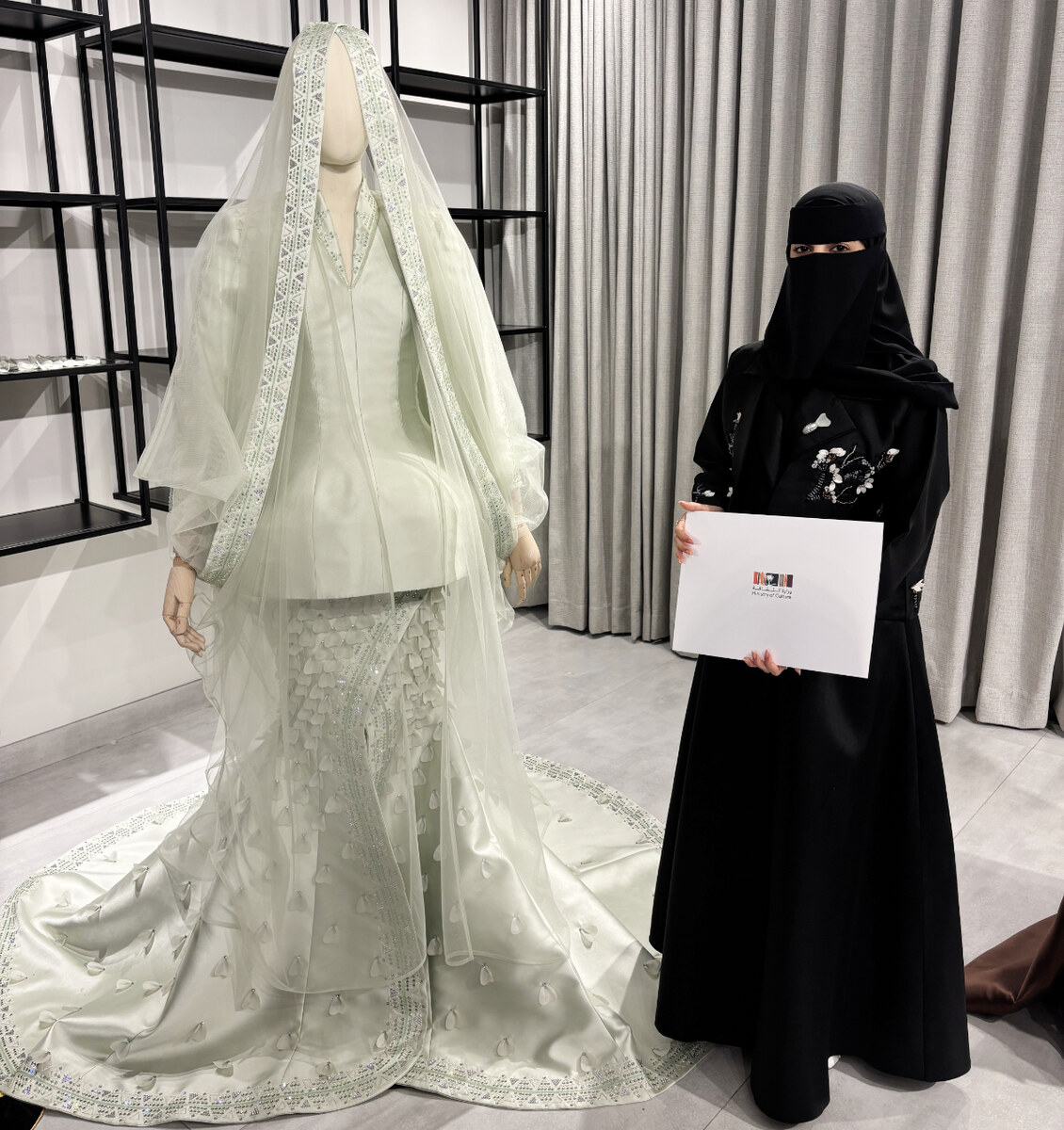RIYADH: You know that distinctive scent in the air after it rains? When droplets of rain interact with dry soil, it releases oils that are beneficial and calming for humans. That is the inspiration behind the title of the second iteration of the Diriyah Biennale in Riyadh: “After Rain”.
It is also derived from a Saudi poem, according to the biennale’s artistic director, the German curator Ute Meta Bauer. “The majority of the audience is Arabic-speaking, so we were really looking for a title that resonates with the local population,” she tells Arab News.
Bauer, who is based in Singapore, has traveled the Kingdom extensively, acquainting herself with the culture on a deeper level.
“I was very curious as it’s a huge country. I could not do this biennale if I could not travel a little bit,” she says. “I wanted to see the people of the country and meet local artists.”
This year, the 177 works on show (from artists from all over the world) address pressing topics such as water shortage, arid landscapes and climate migration. The biennale is being staged in Riyadh’s JAX District, overlooking Wadi Hanifah, which has itself dried out over time.
“I really wanted to make a biennale that was an emotional experience, where people can learn more and understand better,” says Bauer. “I really hope that people will see that art can touch them — that it can unlock questions and conversations about the current state of the world.”
Here are seven highlights from the biennale, which is free to visit and runs until May 24.
ALIA FARID

‘In Lieu of What Was’
The Kuwaiti-Puerto Rican artist’s oversized illuminated fiberglass statues dominate a dark room. The work focuses on the importance of access to water. The statues represent five different kinds of water vessels, from the clay pot to the plastic bottle.
“She was inspired by the public water fountains and towers across Kuwait,” explains the biennale’s co-curator Ana Salazar. Kuwait reportedly lacks freshwater resources due to low precipitation. The installation is accompanied by a film about rural life in a marshland in southern Iraq that is drying up as a result of climate change.
SAMIA ZARU

‘Life Is a Woven Carpet’
The veteran Palestinian artist and educator presents a ceiling-high, net-like hanging of ropes studded with pieces of clay and glass found in old Palestinian buildings. “It reflects the artist’s idea of life as a rich fabric of threads, with knots, tangles and empty spaces,” according to a statement. Indeed, the work is full of little openings that invite viewers to freely explore the work from any vantage point.
SARA ABDU

‘Now That I’ve Lost You in My Dreams, Where Do We Meet?’
Aromatic soap bars form a symmetrical triad of curved walls that embody the emotional notions of memory and yearning for the departed. The Saudi artist’s work is “inspired by dreams of people from (her) life who are no longer present,” according to a statement. “… the installation became a place to examine these dreams as a space of reconciliation and acceptance; a space where new memories and encounters could be generated.” Each bar is engraved with a word from the title. “For me, (the title) is a beautiful question: Where is physicality located in relation to memory?” the biennale’s head of curatorial programs, Snejana Krasteva, says.
EL ANATSUI

‘Logoligi Logarithm’
The renowned Ghanaian artist’s piece is reportedly the largest at this year’s biennale. The title means ‘snakelike’ or ‘indirect’, and indeed, as you walk through its narrow folds, the hanging work does seem like an overwhelming labyrinth. Made of hundreds of bottle caps, it apparently took three weeks to install. It addresses colonialism, consumerism and waste. “A good work of art can be read on many levels,” says Krasteva. “You can read this work aesthetically and appreciate it formally as Anatsui’s investigation into what he calls the ‘unfixed form,’ or you can also read it politically, as a metaphor for the opacity of political systems and bureaucracies.
DANA AWARTANI

‘Come, Let Me Heal Your Wounds’
The Saudi artist, who is of Syrian and Palestinian heritage, had spent time in Kerala, India. “She was working with a community that uses medicinal plants to naturally dye cloths. She would use these ‘healing cloths’ and stretch them on a frame,” co-curator Salazar says. That practice was used in this wall-mounted work consisting of overlapping cloth panels that are colored in muted shades of yellow, pink and blue, on which Awartani has mapped out — by tearing holes and darning them — numerous heritage sites across the Arab world that have been damaged in recent years.
CITRA SASMITA

‘Timur Merah Project XII: Rivers With No End’
The spread of Islam through the Asian archipelago is the inspiration behind the Balinese artist’s large-scale wooden work that is symbolic of a waterway and the travel of knowledge. Aesthetically, the carved wooden pillars reference the architecture of the crucial Indonesian port of Nusantara, while the colorful, floral fabrics are inspired by local sail designs.
MAŁGORZATA MIRGA-TAS

‘Siukar Manusia’
Through her textile portraiture works, the Polish-born Roma artist aims to challenge how the Roma, the largest ethnic minority group in Europe, are perceived after centuries of persecution, discrimination and violence against them, which continues to this day. In this pairing from the titular series, she introduces a father and daughter — Augustyn (a violinist) and Elzbieta — and a mother and son, — Katarzyna (a cook) and Leszek. The focus is only on the individuals, the backgrounds plain. The title of the series means “Wonderful people.”























